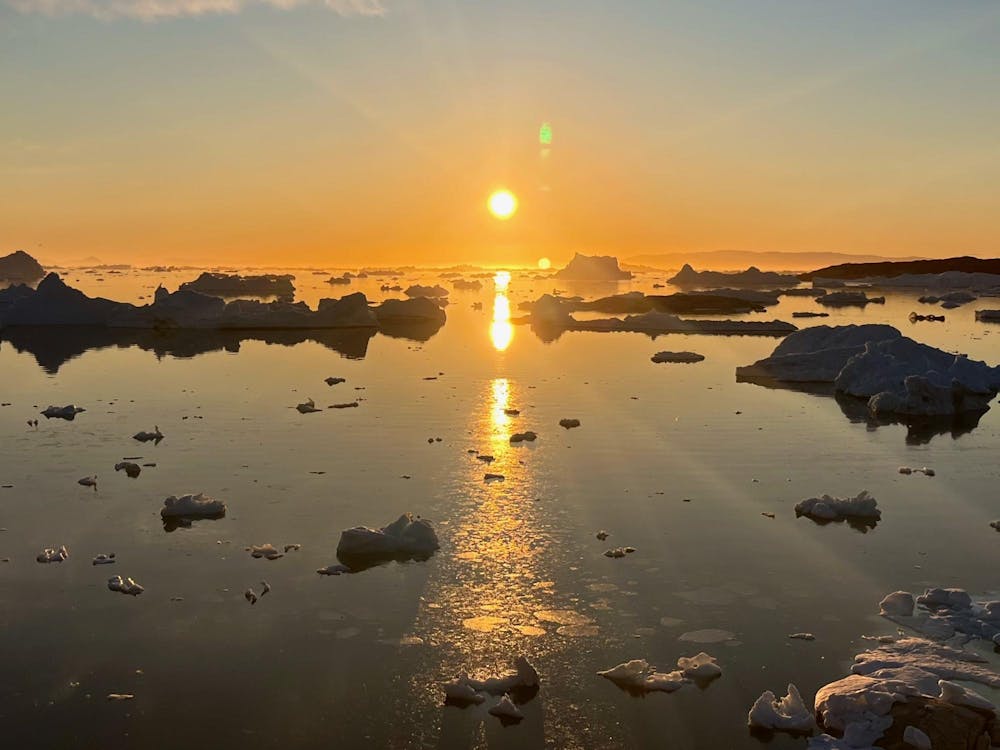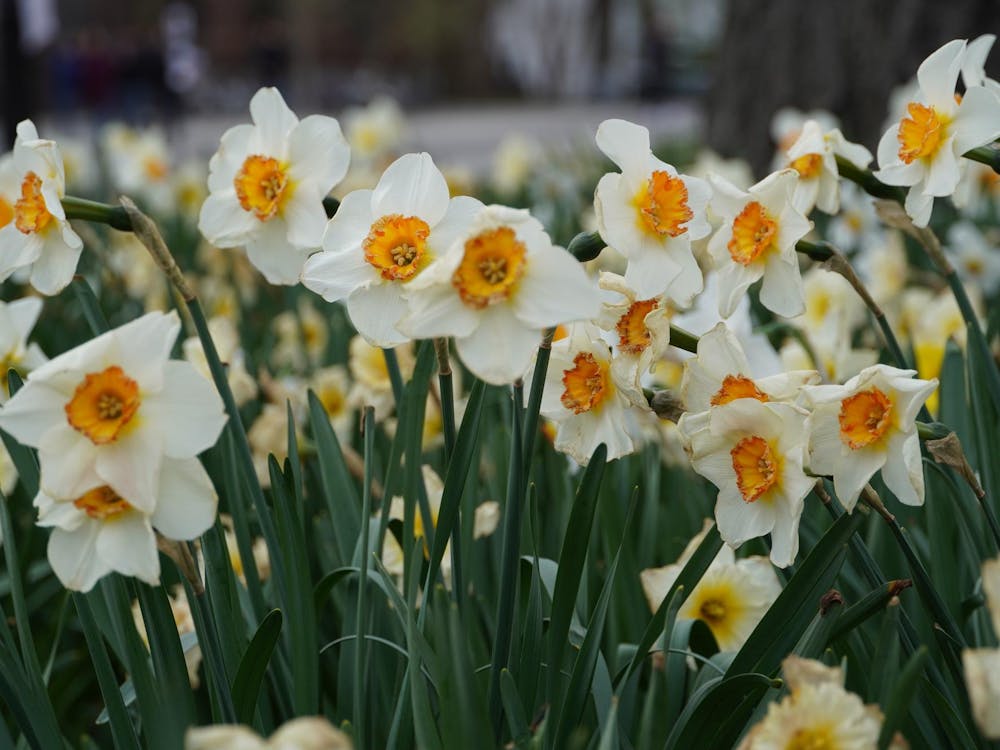The sun never sets in Greenland — not over the summer, at least. They call it the “midnight sun”: a natural phenomenon of 24-hour sunlight caused by the tilting of the Earth. At its lowest point, the Arctic sun stays a few fingers above the horizon, setting the water afire like molten gold and outlining the silhouettes of the icebergs. It hovers there, and if you stick around long enough into the morning hours, it rises again.
If you define a day by sunrise and sunset, then my twelve “day” stay in Greenland would be the longest single day of my life. At night, I would turn in for bed with the sky bright as day outside. In the morning, the sun greeted me again. It was a constant presence through snowy mornings, cloudy days, and late nights. Greenland was a world of everlasting daylight, where birds sang at midnight, where icebergs floated placidly in the bay, and where barkeepers tilted their shutters incrementally to create a semblance of a night out.
It was in this world that I learned the ways of the Arctic. I was there as part of a study abroad course on climate change and arctic ecology. Every morning, I donned my layers: tank top, leggings, another layer of pants, liners, a sweater, a jacket, wool socks, gloves, and a beanie for the 40 degree Fahrenheit weather. After lacing up my hiking boots, I would set out with the class on scheduled field excursions and lectures. Some days, we hiked through snow, shrubs, and mud to collect samples of freshwater and terrestrial organisms. Other days, we took boats out to sea to see the icebergs and coastal marine ecosystems up close. We traveled by bus, boat, and plane, skipping up the west coast to visit Kangerlussuaq, Ilulissat, and Qeqertarsuaq.
Often overlooked on the world map, Greenland sits off the Canadian east coast. Most of it is covered by ice, home to a limited Arctic ecosystem adapted to extreme cold. By day, I met many of its members, from the tiny Arctic spider to the white Arctic hare to the distant musk oxen grazing on the tundra. From the streets, I learned to recognize the ubiquitous snow bunting, merrily singing from every rooftop. Out on the ocean, as I wobbled on a kayak around icebergs, I watched the gulls and fulmars soar and skim effortlessly over the surface of the water.
By night, I navigated the network of dirt roads and landmarks with my classmates. We made a favorite of one of the bars in Ilulissat, where I felt the rhythm of live Greenlandic music for the first time. In the morning hours, when the sun began to dip low, we ran down the empty streets laughing, past roadside ponds where red-necked phalaropes swam in circles oblivious of the hour. By the end of our trip, we could trace the little town by heart, from the central tourist strip to the far fields where the sledge dogs slept at their posts and woke to howl like a lost pack of wolves.
This is my love letter to Greenland: a place where I grew, a place of eternal sunlight where a band of teens and twenty-somethings studied by day and ran free at night. I will remember my visit as a pocket of idyll — a dream in a strange Wonderland where time stood still and one day spun into many. There, I embraced the wacky and the new, taking a cold plunge in an ice bath and sampling a parade of foods like muskox salami and whale blubber. I learned to be daring and adventurous.
I also learned to appreciate the land — that wild and untamed world of glaciers and tundra. And yet, as infinite as that day felt, as untouched the world seemed, I knew that it had to end.
I would like to remember the Arctic just the way I left it, before that last boat ride and that last flight back across the Atlantic. I would like to remember the sunlight on the water, the gulls soaring overhead, the sledge dogs slumbering with their snouts tucked into their tails. But as frozen and timeless as the Arctic appears, every day more of it changes. Pollutants travel the ocean and wind currents and collect in the North. Icebergs calve from the glaciers and spiral into the bay before drifting into the open ocean and melting. I am glad to have explored this otherworldly land, but as I left, I knew that the sights I saw would not stay the same.
Jessica Wang is a member of the Class of 2026 and a staff writer for the Prospect at the ‘Prince.’ She can be reached at jessica.wang@princeton.edu.










